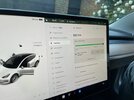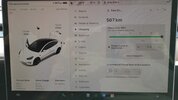Thank you. I guess I was really asking if there was any additional balancing that takes place after charging hits 100% and it seems like “no”. If that’s the case, no reason to have it sit at 100% longer than necessary.
There is probably balancing that takes place past 93% charge or something like that. Sitting at 100% for a little bit may help the BMS calibrate a bit better but who really knows.




